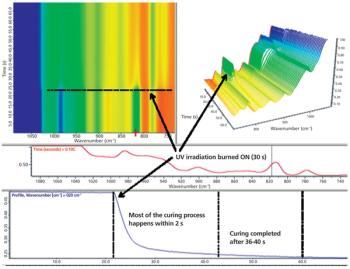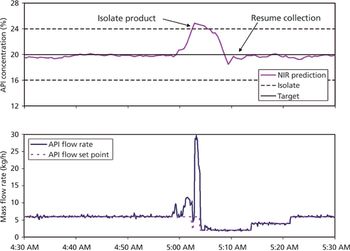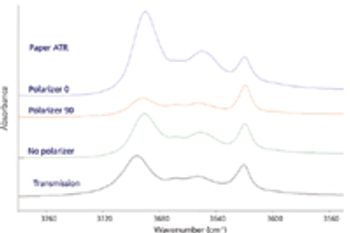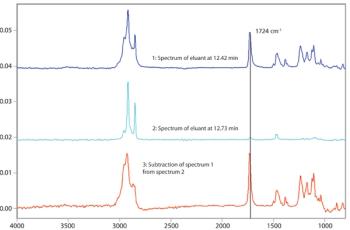
Special Issues
When combined with the rapid scan speeds of modern instruments, Fourier-transform infrared (FT-IR) spectroscopy provides a powerful real-time method for monitoring chemical changes (for example, the optical adhesive caused by illumination of a UV lamp). This article describes the characterization of several adhesives used in an optical assembly. Several different approaches to measuring the rate of change during the curing experiment are described. As the number of uses for UV curing and photopolymerization increases, real-time FT-IR should play a major role in characterizing these new materials and products.



